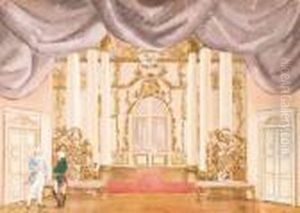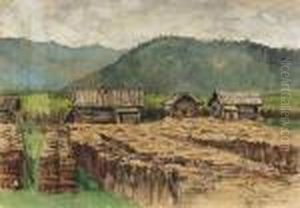Evgeni Alexandrovich Lanceray Paintings
Evgeni Alexandrovich Lanceray, also known as Yevgeny Lansere, was a prominent Russian sculptor and graphic artist, renowned for his equestrian statues and historical figures. Born on August 23, 1848, in Pavlovsk, near Saint Petersburg, Russia, into a family with French and Russian heritage, Lanceray demonstrated an early talent for art. His father, a well-known architect, and his mother, who was interested in the arts, encouraged his artistic pursuits. Lanceray's education was eclectic, embracing a wide range of artistic influences, which would later be reflected in his diverse body of work.
Lanceray's artistic career was marked by a profound interest in the people, history, and cultures of Russia and Central Asia. He was particularly fascinated by the Cossacks, Bashkirs, and Kyrgyz people, and many of his works depict scenes from their lives, as well as historical battles and everyday scenes of the Russian countryside. His sculptures often featured a remarkable sense of movement and meticulous attention to detail, making them highly valued for their realism and dynamic qualities.
Despite his relatively short life, Lanceray left an indelible mark on Russian art. He was a prolific artist, creating more than 400 sculptures in bronze. His technique involved a keen observation of his subjects, translating their essence into bronze with a skill that was admired by his contemporaries. Lanceray's works were exhibited widely during his lifetime, both in Russia and abroad, and he received numerous awards for his contributions to art.
Lanceray's influence extended beyond his immediate circle, inspiring future generations of Russian and Soviet artists. His dedication to capturing the spirit of his subjects, combined with his technical mastery, has ensured that his works remain celebrated examples of 19th-century Russian sculpture. Evgeni Alexandrovich Lanceray died on September 22, 1886, in Saint Petersburg, but his legacy lives on through his art, which continues to be admired for its beauty, vitality, and expression of Russian cultural identity.

